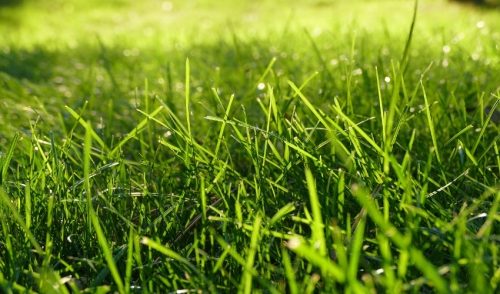One of the biggest passions and frustrations for homeowners everywhere is maintaining a lush, green lawn. For those who have just moved into a brand new home, or for those who have reseeded their lawn, this article is for you. Even though how you seed your lawn is very important, what you do next will determine if your grass becomes a lawn or nothing at all.
After you have seeded your lawn, you should water it frequently. Continue to water your new grass at least twice a day and even more depending on how hot the weather is until you’ve mowed it one or twice. This can take some time and effort, so be prepared to have a system in place so you don’t miss a chance to feed your lawn what it needs to become thick and flourish. Once you have achieved a thick blanket of grass and you are able to mow it, you can establish a new watering routine that involves a less frequent effort.
Be mindful of when you should first mow your lawn. If you mow too early you can ruin your lawn and create bare spots. Try to hold off on the clippers until your grass is between 3 and 3 ½ inches long. Make sure the blade on your mower is clean and sharp, and then give your new grass its very first trim when it’s nice and dry. I use the word trim to emphasize how low you should cut your lawn. You should only attempt to cut about 1/3 of the height of your lawn. Don’t mow too often at first to avoid causing too much stress on the any seedlings that are late bloomers.
In addition to watering, you also feed it nutrients with starter fertilizer. You can grab any starter fertilizer from your local hardware or garden store. Fertilizer will provide your grass with the right proportion of nutrients new individual grass plants need to grow into thick and strong blades with a solid root structure. After several weeks, you should apply a new set of fertilizer that includes iron. The iron will give your grass the extra boost it needs to maintain its thick, green appearance. Similar to the watering schedule in the beginning, you should develop a fertilizer feeding schedule for every 6-8 weeks to provide the continuous flow of nutrients your lawn needs to combat weeds, insects, to withstand the heat, and even backyard football. When it comes to managing weeds, wait until about a solid four weeks of growth before using a crabgrass or weed control applicant. Weed control can be very strong so it’s best to make sure your grass is strong enough to take the heat. No one ever said beauty didn’t come without a little bit of pain. Use bug control and weed control as needed, but make sure to read the product label to make sure you are not using something that may be too harmful for your type of grass.
After about a solid six months of proper care, your newly seeded grass will have become your green lawn. You can be proud that both your front and backyards are green and strong. Once your lawn is nice, mature, and lush, you can develop new routines and perform other tasks that will help keep it that way.






Comments